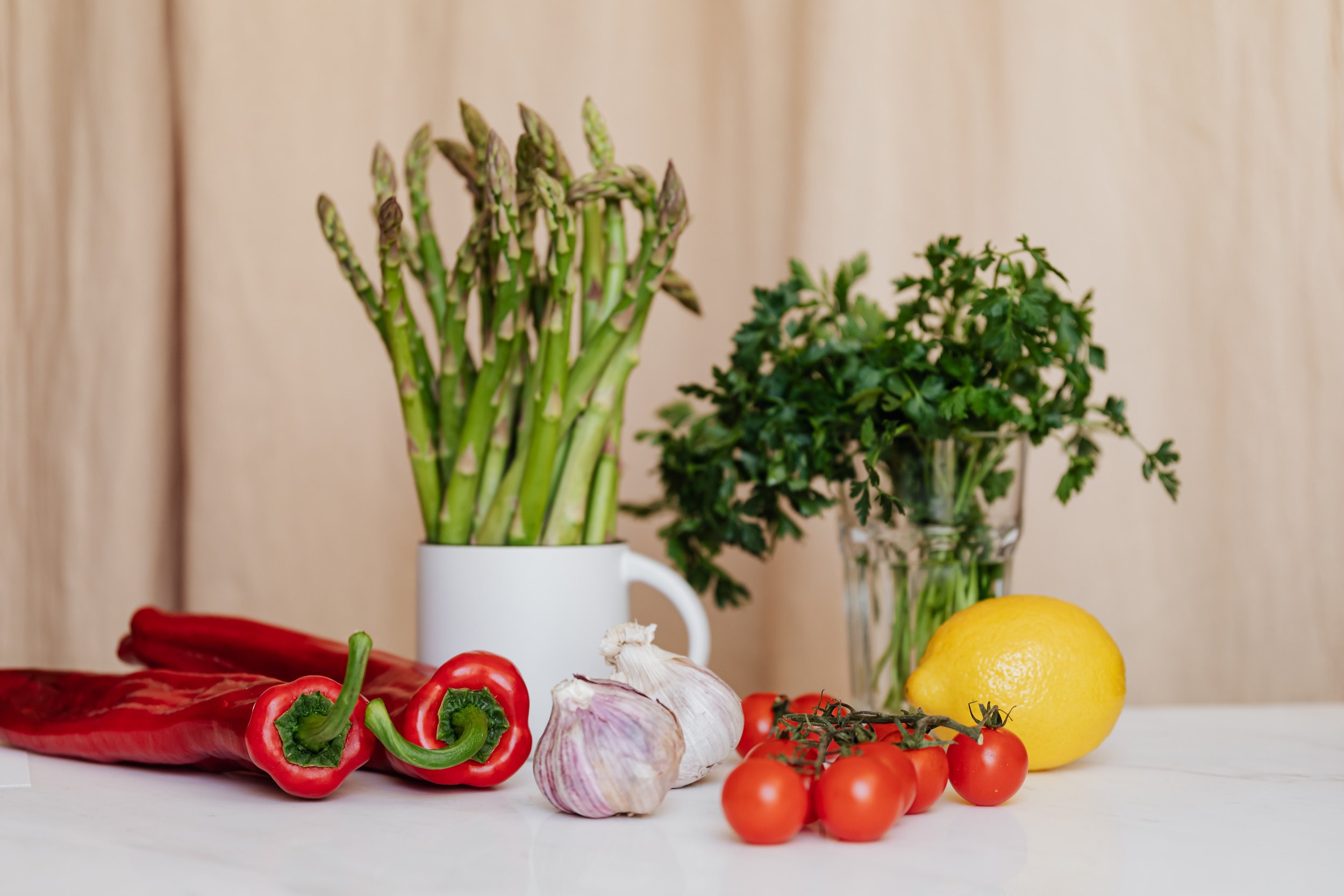What is the best diet for endometriosis?
Endometriosis is a chronic condition where ‘lesions’ of endometrial-like tissue grow outside of the uterus. Diet can play a positive role in reducing endometriosis symptoms and potentially even slowing the growth of lesions. Read on to learn about key nutrients for endometriosis and what overall dietary pattern is helpful if you have endometriosis.
What is endometriosis?
Endometriosis is a condition where endometrial-like tissue, i.e. tissue that is similar to the uterus lining, is located in other parts of the body. These are referred to as endometriosis lesions. Endometriosis lesions may be found on the ovaries, fallopian tubes, the outside of the uterus and throughout the abdominal and pelvic region.
The cause of endometriosis is a hotly debated topic in the scientific community. Recent research indicates the immune system is involved as it responds to these lesions with inflammation, although it doesn’t appear to be an autoimmune disease. Hormones also play a part as oestrogen encourages the growth of the lesions.
Endometriosis currently affects more than 10% of people with a uterus - in Australia, statistics suggest 1 in 9 people are affected.
Some people with endometriosis experience no symptoms, whereas others experience pain, heavy menstrual bleeding, bleeding between periods, lethargy and reduced fertility, among other symptoms. A laparoscopy (a type of keyhole surgery) is recommended to most accurately diagnose (and also to remove) endometriosis.
Endometriosis can be truly debilitating and unfortunately, treatments are limited and many endo warriors find the treatments ineffective. Even the surgical removal of lesions by laparoscopy may only provide temporary relief, as the condition is chronic and the endometriosis can grow back and/or grow elsewhere.
How can diet help endometriosis?
It’s no wonder that many who suffer with endometriosis feel like they’ve lost control of their body and “just have to put up with it.”
Nutrition is one aspect of your health where you may be able to contribute positively to the management of endometriosis. What you eat may influence the progression of endometriosis and the symptoms you experience such as bloating and/or pelvic pain. Lifestyle and dietary factors may impact levels of chronic inflammation, the progression of lesions and manage the activity of the immune system in reacting to the lesions.
When it comes to using dietary strategies for endometriosis, our ultimate goals are to reduce levels of inflammation and calm the immune system. In doing so, we aim to slow the progression of endometriosis lesions, reduce symptoms and if relevant, improve fertility.
Nutrients to help endometriosis
Nutrients that are important to the management of endometriosis include:
Omega 3 fatty acids - omega 3 fats, found in oily fish (such as salmon, sardines and mackerel) as well as plant omega 3 (found in walnuts, legumes and seeds like chia, flax and hemp) have strong anti-0inflammatory properties. Higher intakes of omega 3 have been associated with a lower risk of developing endometriosis. Omega 3 fats may also reduce endometriosis pain and inflammation as they alter inflammatory responses in the body.
Vitamin D - people with endometriosis have been found to have lower levels of vitamin D than those without, and vitamin D levels may also be correlated with the severity of endometriosis. Our main source of vitamin D is sunlight, however small amounts can be found in foods including egg yolks and oily fish.
Antioxidants and fibre from a range of fruits and vegetables for improved hormonal regulation and reducing oxidative stress associated with inflammation.
Vitamins A, C and E for their antioxidant effects - in particular, a combination of vitamin C and vitamin E may potentially be beneficial in reducing oxidative stress and facilitating a reduction in symptoms including chronic pelvic pain. Vitamin C is found in fruit and vegetables including berries, citrus, kiwi fruit, kale and potato. Vitamin E can be found in green vegetables, avocado, nuts and seeds.
Magnesium to support the proper functioning of the muscles in the pelvic and abdominal regions. Magnesium rich foods include whole grains, legumes, green leafy vegetables, nuts and seeds.
Certain supplements can also assist with managing endometriosis by supporting the immune system and reducing inflammation. However, you must consult with a qualified practitioner before taking any supplements to ensure you take the correct dose for your needs (and to make sure there aren’t any reasons why a supplement may not be suitable for you). For example, N-acetylcysteine (NAC) and palmitoylethanolamide (PEA) have responded well in small clinical trials so far, reducing pain and lesion size in people with endometriosis.
What overall diet is best for endometriosis?
Did you know there isn’t one specific “endometriosis diet”?
The thing is, endometriosis is not experienced by everyone in the exact same way. The condition varies in severity and the type of symptoms that it causes.
Depending on your experience, certain therapeutic diets may be helpful to address your symptoms. For example, there is an increased prevalence of Irritable Bowel Syndrome (IBS) in people with endometriosis. Short term, a low-FODMAP diet may be beneficial for the management of your IBS-type symptoms. There is also some evidence that a gluten free diet may help with pelvic pain and quality of life, which you can read more about in my blog post HERE.
More broadly speaking, a Mediterranean-style dietary pattern is a solid foundation to start with. A Mediterranean diet is recommended for endometriosis as it includes a range of anti-inflammatory foods that are rich in antioxidants. Notably, the Mediterranean diet is safe for long-term use and has evidence to support the reduction of pain and lesions in those with endometriosis.
The Mediterranean dietary pattern comprises of:
High intake of monounsaturated fats e.g. extra virgin olive oil
High intake of other sources of unsaturated fats such as nuts and seeds
High intake of legumes e.g. chickpeas, beans, lentils
High intake of fruits and vegetables
High intake of whole grains and cereals e.g. oats, quinoa, brown rice, whole wheat
Moderate quantities of fish, white meat, eggs and dairy
Low to moderate consumption of red wine (*not recommended when you’re trying to conceive!)
Low intake of red meat, processed meat
Low intake of lollies, desserts, highly processed foods and sweetened drinks.
So what should I eat for endometriosis?
The following is a very general guideline for a Mediterranean style eating pattern. However, it is recommended that you consult with a practitioner before making significant changes to your diet and to better personalise this dietary pattern to suit your unique needs.
Use extra virgin olive oil instead of other oils/fats in cooking and salad dressing
Consume vegetables with every meal (including leafy greens and brightly coloured veggies like tomatoes and capsicum)
Consume 2–3 serves of fruit per day
Consume legumes at least 3 times per week (such as in salads, soups, casseroles, veggie burgers, falafel)
Have 2–3 serves of fish or seafood per week (at least one oily fish such as salmon or sardines)
Eat a minimum 3 serves of nuts per week (including walnuts and almonds)
Choose white meat instead of processed meats (sausages, burgers) and keep red meat portions small and lean
Choose natural (unsweetened) yoghurt as a snack on most days
Cook regularly (at least twice a week) with tomato, garlic, onion, and herbs as a base for pasta sauces, casseroles and baked dishes
Reduce consumption of cream, butter, margarine, coconut oil, deep-fried or battered foods, sweetened drinks, pastries, cakes, sweet biscuits, lollies and highly processed savoury snacks (e.g. potato chips, savoury biscuits)
Want to talk more about endometriosis and diet and dive deep into what will best serve your personal needs? Book a complimentary 15 minute discovery call with me to learn how we can work together to optimise your health and fertility journey.
This article was co-authored by recent intern and now clinical nutritionist, Court Garfoot. You can find Court online here and on Instagram here.





